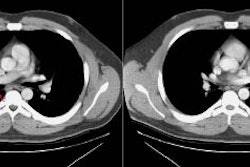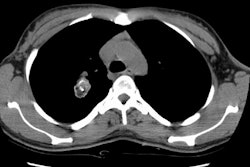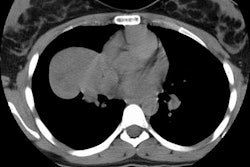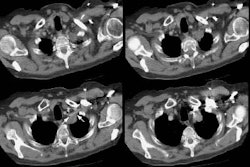AJR Am J Roentgenol 1998 Mar;170(3):719-721
CT angiogram sign: incidence and significance in lobar consolidations evaluated by contrast-enhanced CT.
Shah RM, Friedman AC
OBJECTIVE: The CT angiogram sign--that is, the ability to see normal pulmonary vasculature within parenchymal consolidations--was initially reported as specific for the diagnosis of bronchioloalveolar cell carcinoma. Our purpose was to establish the frequency of this sign in lobar consolidations of varied causes as revealed by contrast-enhanced CT. We also sought to determine if the presence of this sign contributed to the specificity of radiographic diagnosis. MATERIALS AND METHODS: All consecutive contrast-enhanced thoracic CT examinations performed for evaluation of lobar consolidations between May 1994 and April 1997 were reviewed. The CT angiogram sign was considered present when segments of pulmonary vessels could be identified within alveolar consolidations. Medical records were reviewed to establish the causes of the consolidations. RESULTS: Fifty-one patients (24 women, mean age = 59 years; 27 men, mean age = 46 years) had lobar or multilobar consolidations due to pneumonia without central obstruction (n = 20), pneumonia or pneumonitis with central obstruction (n = 19), passive atelectasis (n = 7), and (one case each) mucus plugging, lipoid pneumonia, pulmonary lymphoma, bronchioloalveolar cell carcinoma, and pulmonary hemorrhage. The CT angiogram sign was present in 15 (29%) of 51 consolidations, including seven (37%) of 19 postobstructive consolidations, four (20%) of 20 cases of pneumonia without central obstruction, one (14%) of seven cases of passive atelectasis, and each single case of lymphoma, bronchioloalveolar cell carcinoma, and lipoid pneumonia. CONCLUSION: The CT angiogram sign is a common finding in lobar consolidations evaluated by contrast-enhanced CT. However, the sign does not add specificity to the radiographic diagnosis.



